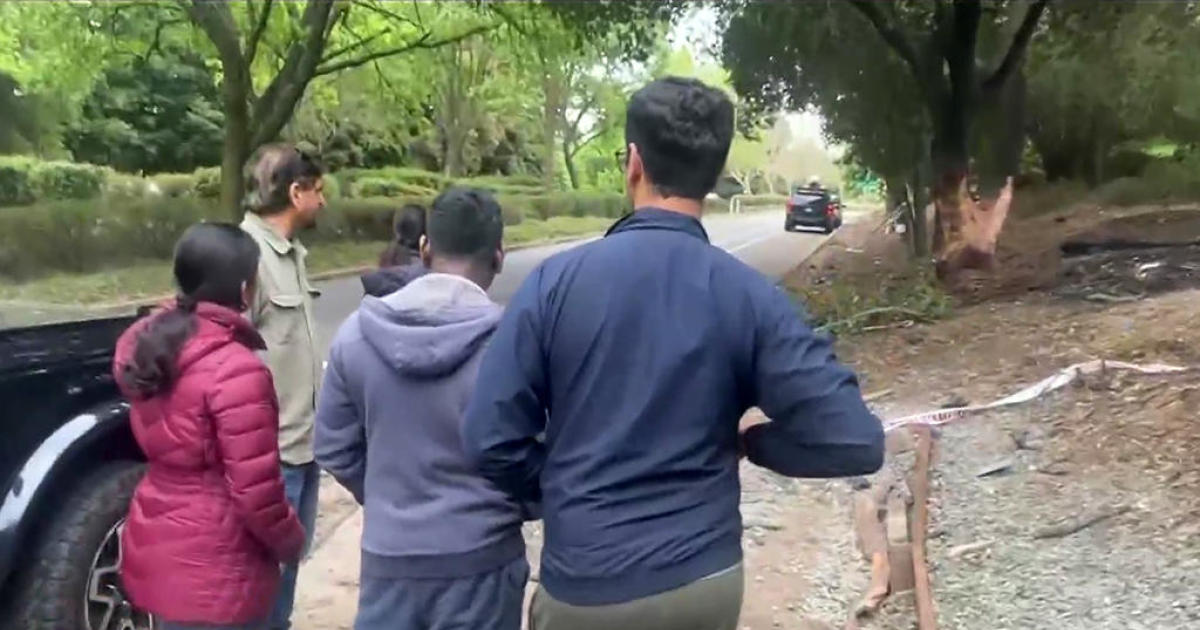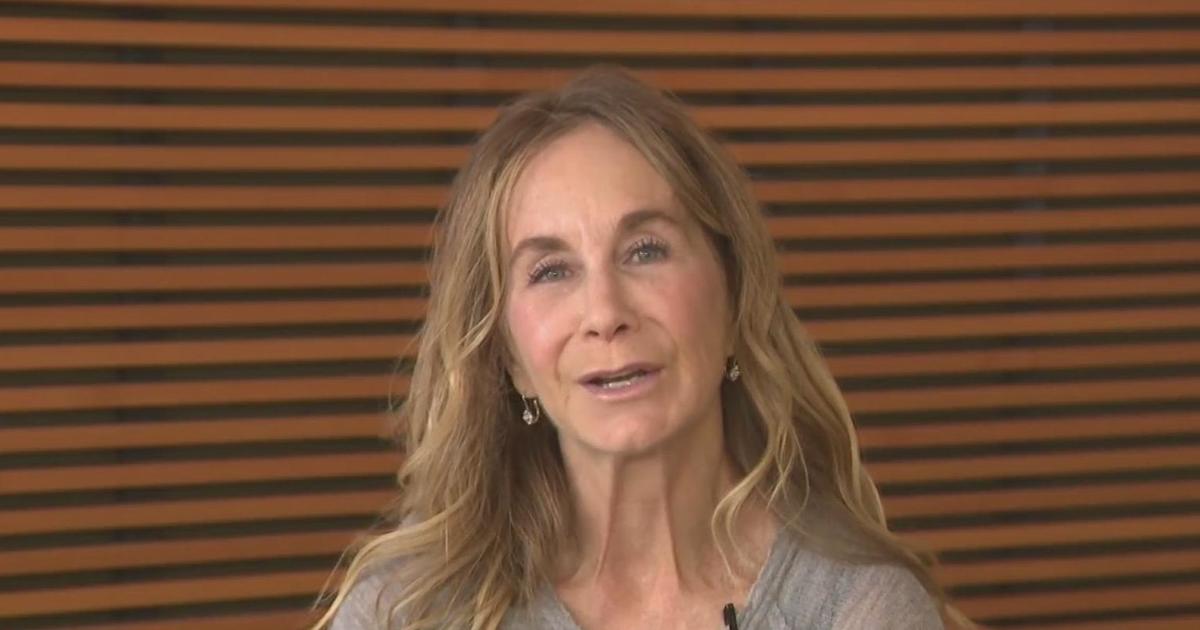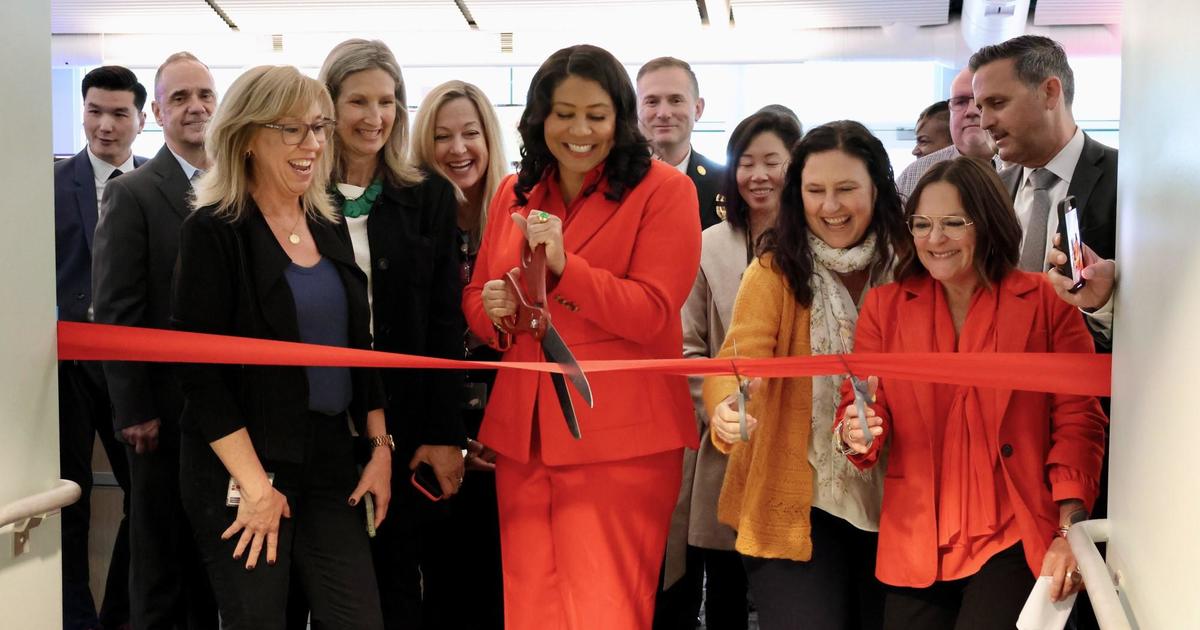'He Stood Up From His Wheelchair'; Promising New UCSF Treatment Aiding Injured Surfer Walk Again
SAN FRANCISCO (KPIX) -- San Francisco's Ocean Beach is celebrated for its cold water and powerful waves. Chris Barr loved to surf here, driving over from the East Bay on weekends.
On Feb. 12, 2017, the waves beckoned.
"I kissed my wife goodbye, said, 'I'm going surfing and I'll see you in a few hours,'" Barr recalled.
On that Sunday, while surfing, Barr fell off a wave with such force that it broke his neck in eight places.
He was found floating in the water by a friend. Soon, his wife Debbie got a call.
"Chris has had an accident and, um, he's at Zuckerberg," she remembered hearing on the phone.
Mrs. Barr packed an overnight bag for her husband, thinking maybe he had perhaps broken an arm or a leg.
She headed to Zuckerberg San Francisco General Hospital. The medical center is the only Level 1 trauma center in the city and county.
When Debbie Barr arrived, medical staff escorted her into a small room where she saw her husband. The emergency team had cut off his wetsuit. What she saw was terrifying.
"He was so cold; stone cold. He had sand all through his hair, his nose and his ears and I knew immediately, 'Oh, this is way worse than a broken bone,'" Mrs. Barr said.
Her husband had a devastating cervical spinal cord injury. Doctors told her that Chris would most likely never regain any movement below his neck. Even if he did survive, they explained, he'd need a ventilator to breathe.
"The first thing he mouthed to me because he was on a ventilator was, 'Pull the plug,'" Debbie Barr said.
Unknown to Chris and Debbie, UCSF doctors at Zuckerberg had already implemented a novel surgical protocol to be used in patients with new spinal cord injuries.
The idea: to tightly monitor a patient's blood pressure and maintain it within the "Goldilocks zone" -- not too high and not too low.
"The 'just right' zone for blood pressure," said Dr. Adam Ferguson, director of data science at UCSF Weill Institute for Neurosciences.
Dr. Ferguson explained how the blood pressure range used in this protocol is much narrower and more precise than what appears in current guidelines. The higher limit is lowered. UCSF scientists found that too much blood flow appears to damage spinal tissue.
Now a new study published in the journal eLife supports the benefits of this blood-pressure protocol.
"Within a very narrow range of blood pressure control, these patients had much better outcomes and, in fact, unexpectedly good outcomes," noted Dr. Ferguson.
The doctors did not discover this approach on their own.
"This is really a machine-human partnership," Dr. Ferguson explained.
"This is one of the great things about being here in the Bay Area," added Dr. Abel Torres-Espin, an assistant professor at UCSF who also is a data sciences expert.
The scientists used machine learning and artificial intelligence as well as data from patient records.
They tracked 118 spinal cord patients at two Bay Area trauma centers: Zuckerberg and Santa Clara Valley Medical Center.
They built an algorithm that scoured the data from each patient, processing hundreds of thousands of data points. They wanted to understand why some patients recover some motor control after a significant injury while others are left in total paralysis.
The novel machine-learning technique is called topological data analysis -- TDA for short. The technology revealed an intriguing pattern which led to the protocol of maintaining blood pressure more precisely within a narrow range.
"We were surprised, yes!" Dr. Torres-Espin noted.
The data scientists and trauma teams then took these findings from "the bench to the bedside" of patients like Chris Barr.
"As soon as they get their surgery, they go straight to the ICU and then we make sure that they maintain their mean arterial pressure goal," explained Prof. Debra Hemmerle, an ICU nurse at Zuckerberg who also co-authored the study.
She told KPIX how the surgical team got Chris into the operating room within four hours of arriving at S.F. General. This was earlier than the recommended 12-14 hours for what is called decompressive surgery.
Chris Barr said that it is common for those who recover from major spinal cord injuries to begin to get some feeling or movement 72 hours or more after surgery.
"I had nothing," Barr said. "Two weeks? Nothing. Three weeks? Still no feeling, no movement at all. So at that point, they sort of write you off. And then, all of a sudden, stuff started happening."
Barr began to feel sensation below his neck. Within months, he could move his toe, then a limb. It was slow, but kept progressing. He then started feeding himself.
"I remember the first day that he ate a piece of chocolate. Like he grabbed a piece and put it in his mouth and we cheered," Debbie said.
Barr then received an experimental stem cell treatment at the Mayo Clinic as well as a spinal-stimulation clinical trial procedure at UCLA.
Today, he can walk on his own. While he has other medical issues to contend with due to his injury, he said that -- without a doubt -- what began at Zuckerberg San Francisco General and continued with his pursuit of other promising treatments has paid off.
ICU nurse Hemmerle remembers seeing him and being astounded.
"He stood up from his wheelchair and walked a couple of steps and -- I get emotional because it still gives me chills," Hemmerle said with tears in her eyes.
Spinal cord injuries affect about 18,000 patients in the United States each year. The lifetime costs to the patient and the cost to society is huge.
Barr told KPIX how data sciences may help further accelerate treatments for him as well as others, but there needs to be more funding and sharing of data.
"Instead of having hundreds of samples, you have thousands of samples. There's no reason we can't have thousands of subjects. I mean, we're really just scratching the surface," Barr said.
Dr. Ferguson believes this approach and novel technique might be applied to other more common spinal issues including spinal stenosis and low back pain which is the most common cause of job-related disability.



